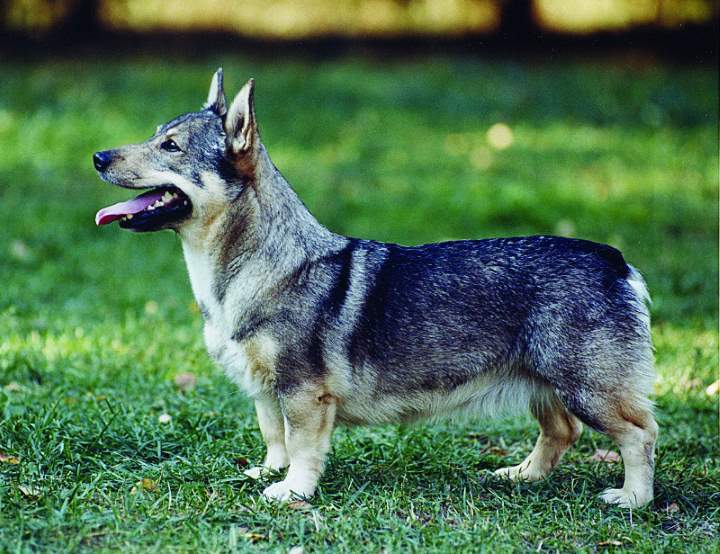The origin of the Swedish Vallhund (västgötaspets) is not known. However, the breed is thought to originate from the time of the Vikings.

Whether the Vikings brought their low-legged spitz to the British Isles where it might have played a part in the background of the Welsh Corgi Pembroke or vice versa, whether the Vikings brought the Corgi back to Sweden, we will never know.
The grey wolf colour and the spitz-like look give us reason to believe that the Swedish Valhund is an authentic Swedish breed although the low legs are considered untypical for all Nordic spitz breeds.
The Swedish Vallhund was rescued from extinction in the early 1940s and all the foundation dogs were found in the West Gothia County (Västergötland in Swedish, hence the Swedish breed name Västgötaspets). The Swedish Kennel Club recognized the breed in 1943.
The breed is a popular companion dog that is still used for herding cattle on farms in its county of origin.
Appearance and size
The body is longish and very strong. Its appearance should always be of utmost alertness, animation and energy. The tail is often a natural stumpy tail, whether short or long, all kinds of carriages are acceptable.
The coat is fairly short, close lying and usually steel grey or a greyish-yellow. A more reddish-yellow nuance is also permissible. Shades of darker hair are found on the neck, the back and on the sides of the body. So called "wolf-markings" in a lighter nuance are very typical.
The ideal height at the withers for males is 33 cm, for females 31 cm, with an acceptable variation of 2 cm.
Breed registration statistics
Below you can find the registration statistics for the Swedish Vallhund in the Nordic countries from 1990 onwards.
| | Sweden | Denmark | Finland | Iceland | Norway |
|---|
| 2015 |
234 |
10 |
102 |
0 |
0 |
|---|
| 2010 |
198 |
6 |
96 |
0 |
1 |
|---|
| 2005 |
184 |
7 |
104 |
0 |
22 |
|---|
| 2000 |
212 |
16 |
64 |
0 |
5 |
|---|
| 1995 |
180 |
3 |
89 |
0 |
10 |
|---|
| 1990 |
249 |
8 |
34 |
0 |
11 |
|---|